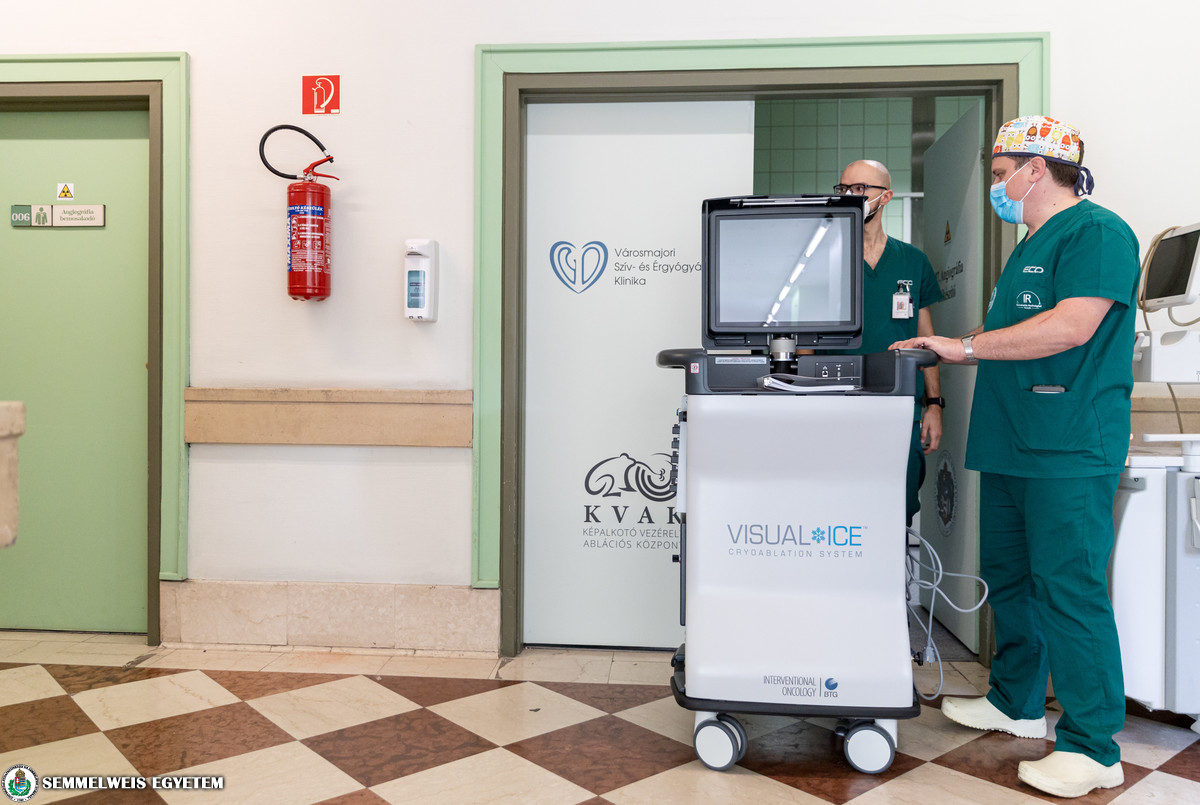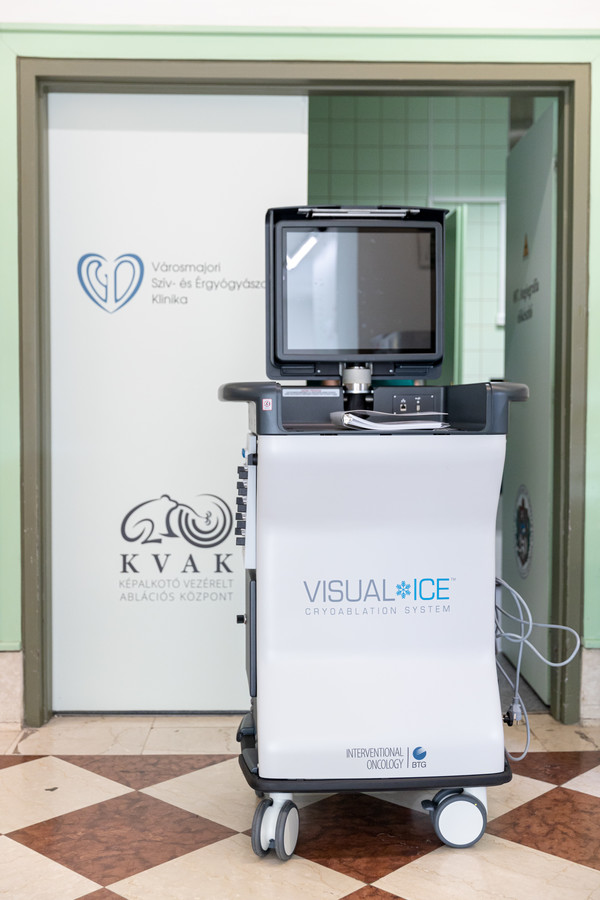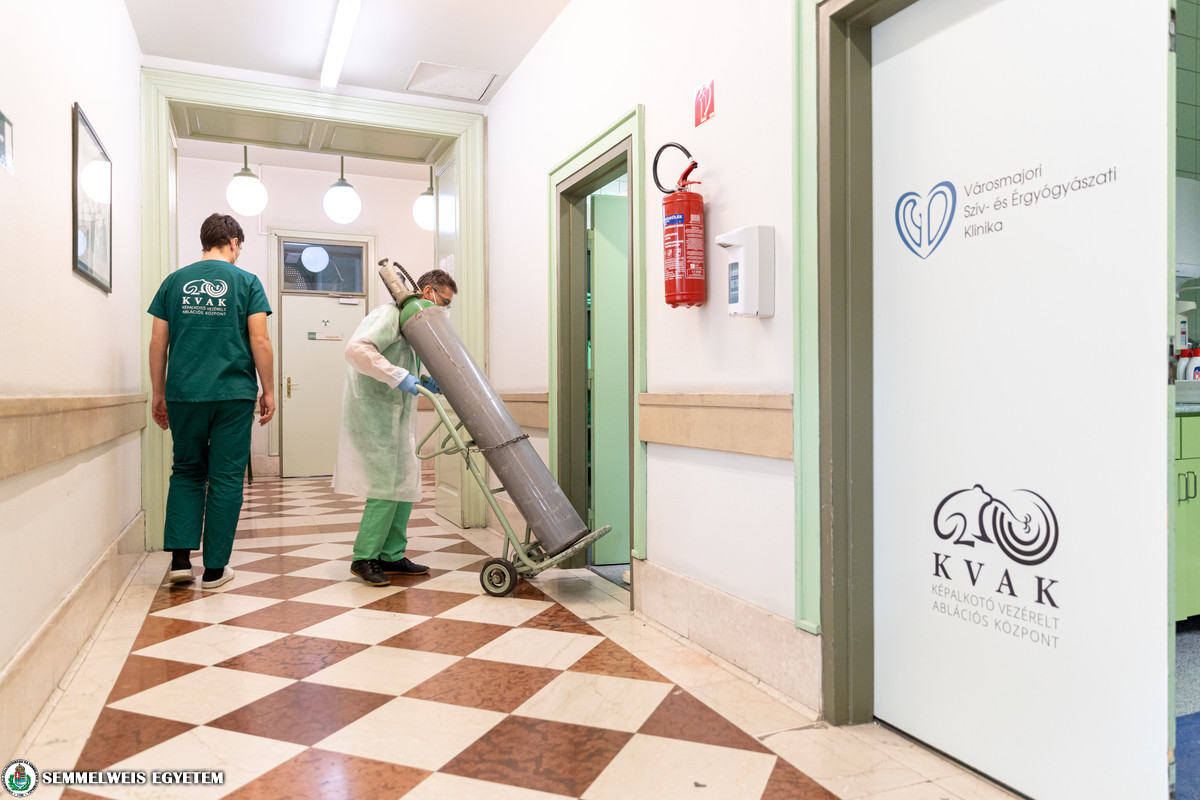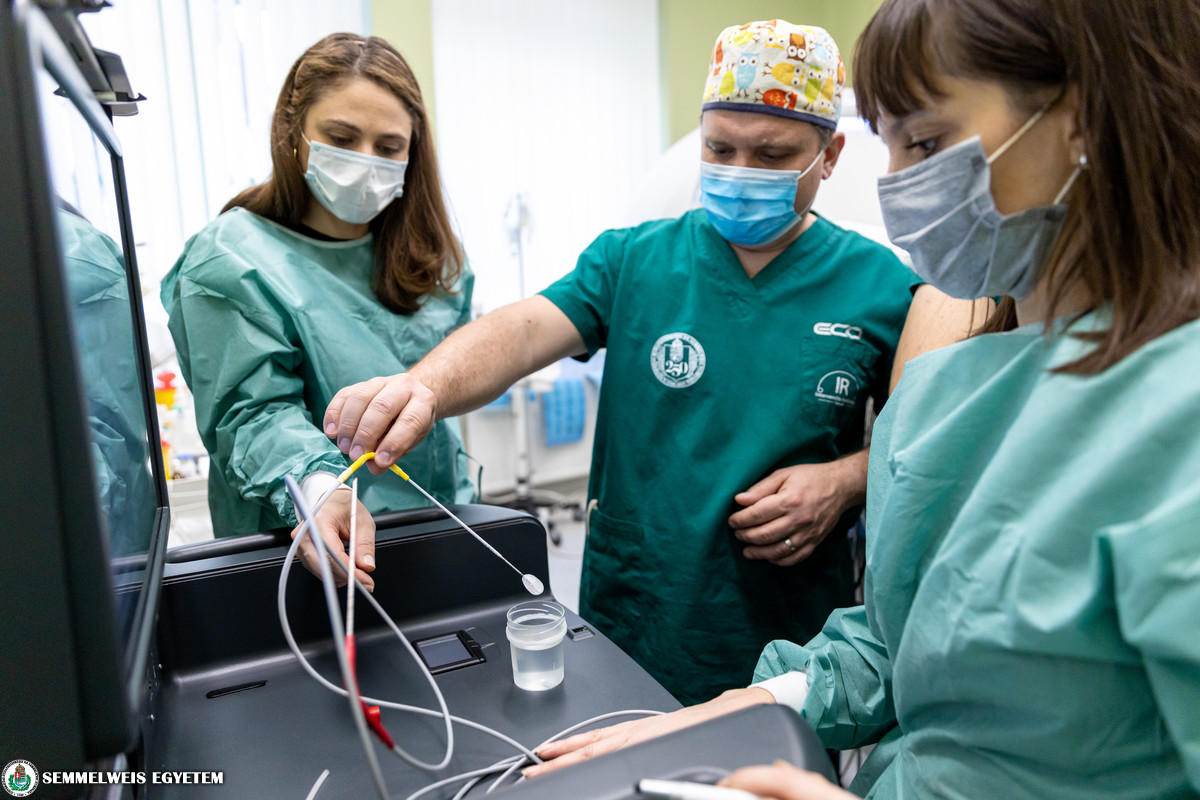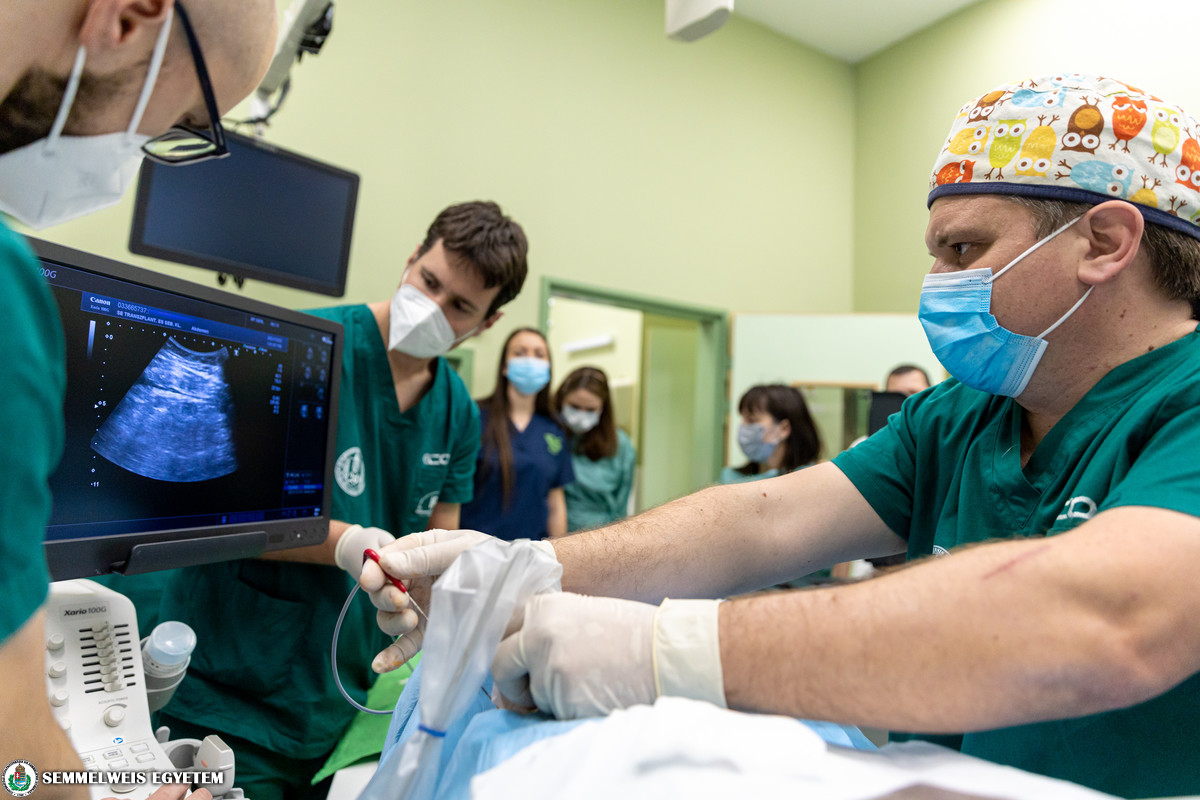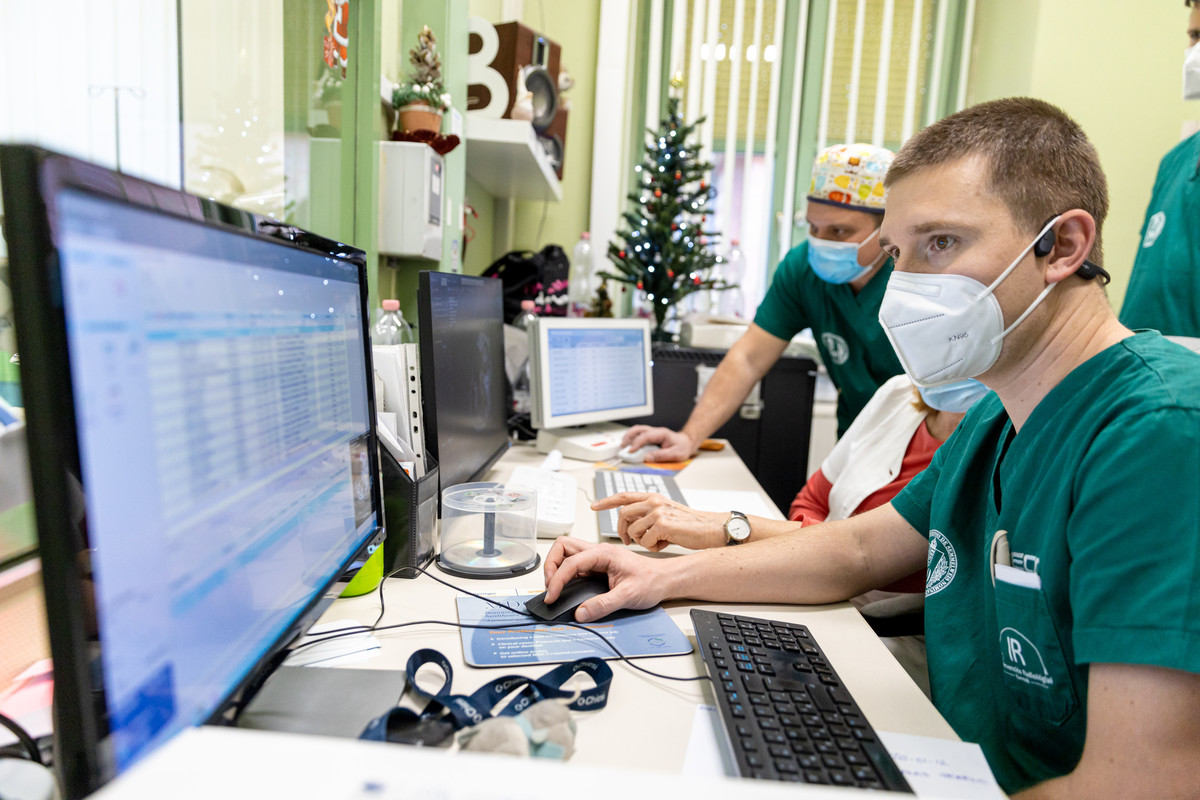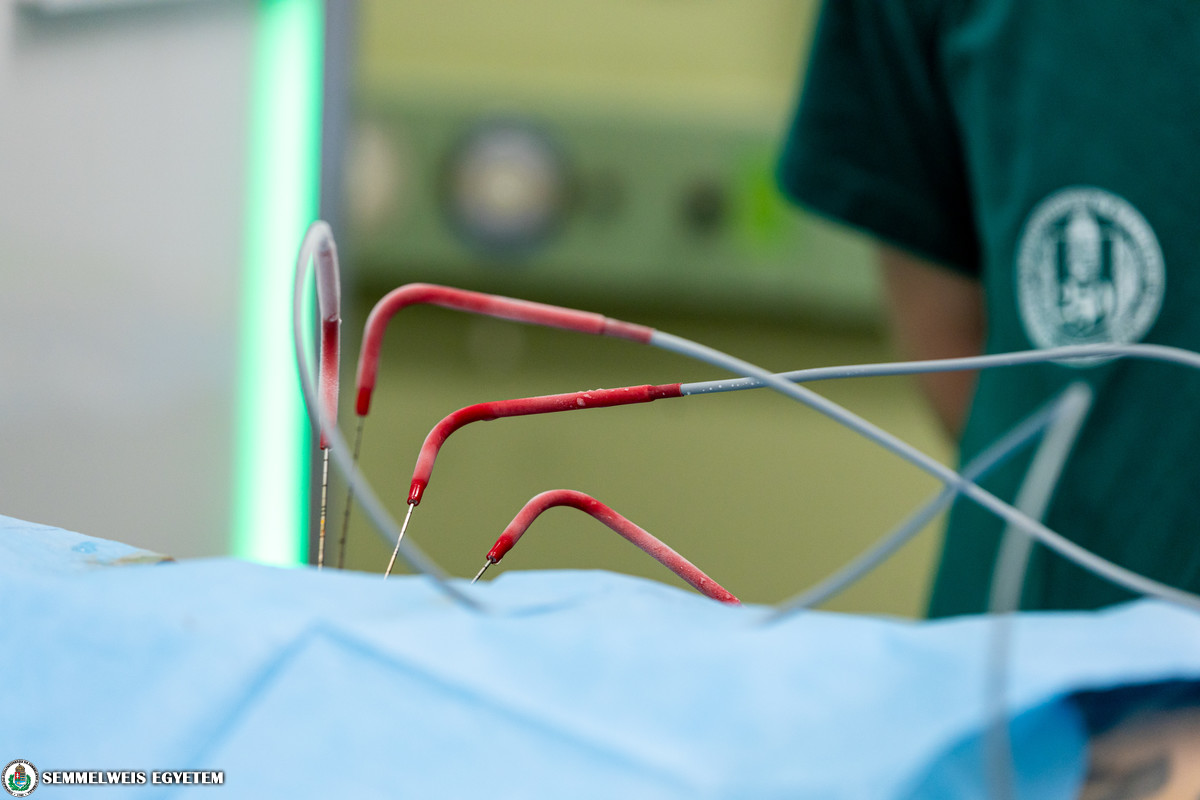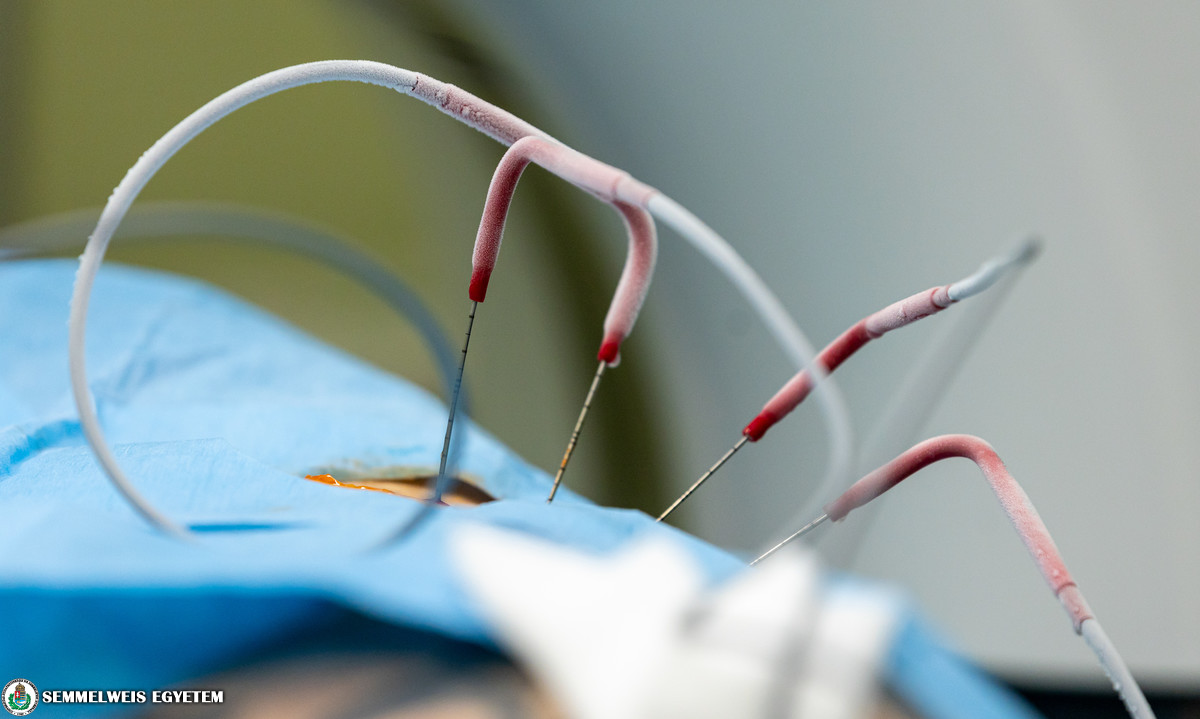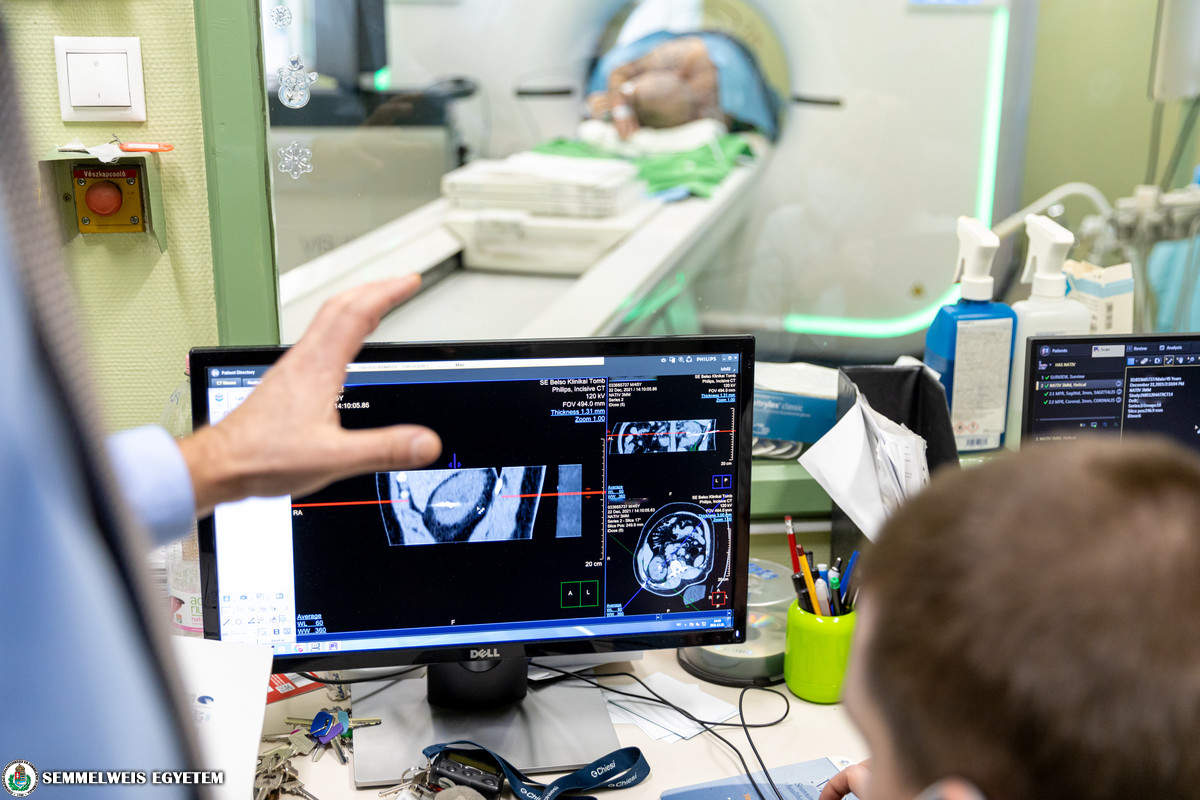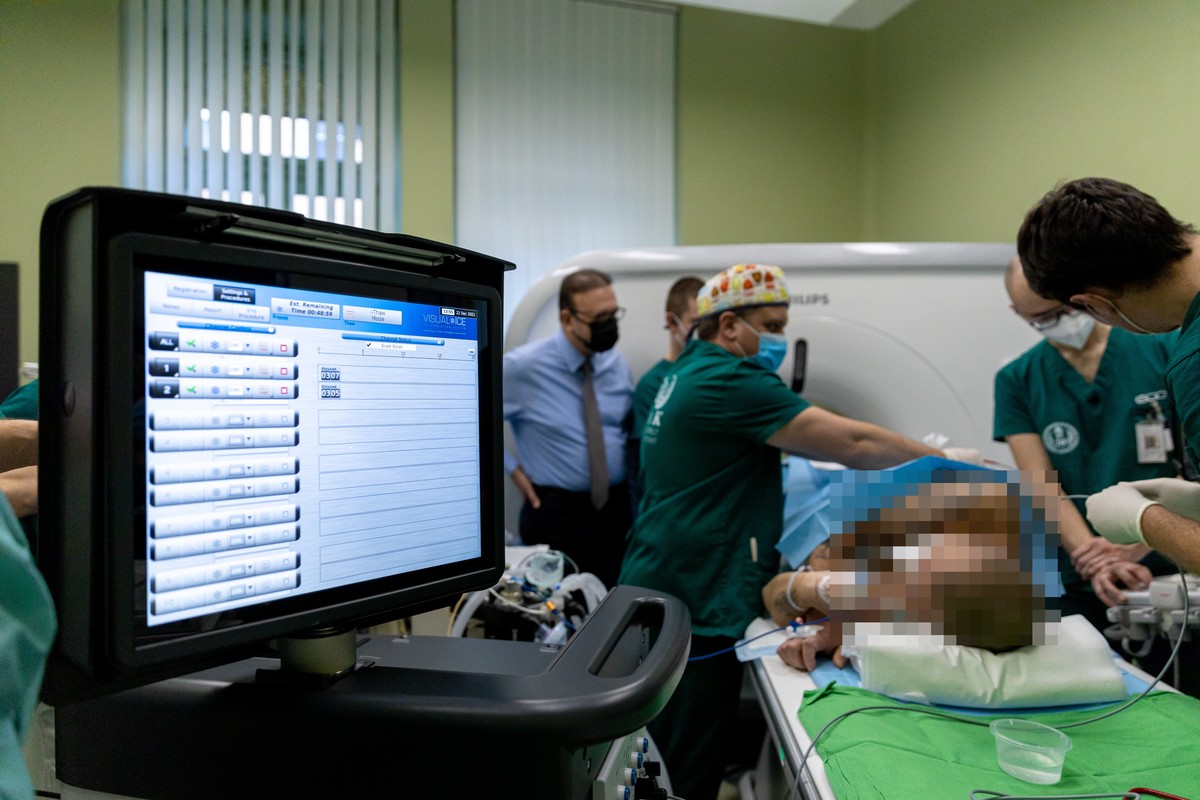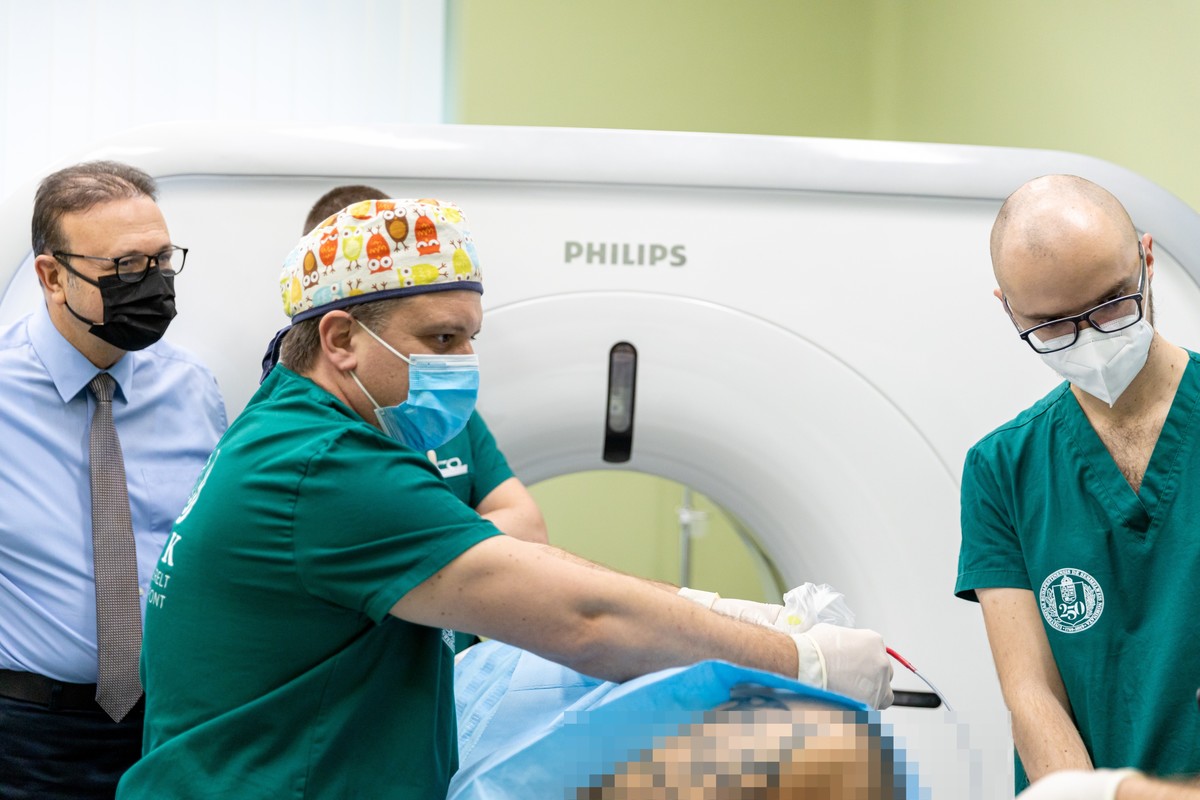At the Imaging-Guided Ablation Center (KVAK) of the Városmajor Heart and Vascular Center of Semmelweis University, a 46-year-old and a 59-year-old man with kidney cancer underwent the first cryoablation procedure in Hungary before Christmas. Both patients were discharged home the next day after the surgery was performed under local anesthesia without complications, so they could spend the holidays with their families.
Cooling has been used for a long time as a pain-relieving procedure, and it is well known that extreme cold temperatures have a tissue-destroying effect. The method of cryoablation is to apply this cold in a focused manner to the tissue to be destroyed: a specially designed treatment needle is introduced into the tumor tissue using ultrasound, CT or other imaging techniques, and then cooled to -40 degrees Celsius using high pressure argon gas”
– explains Dr. Ákos Pál Deák, associate professor, under whose supervision the operations were performed. The KVAK director adds that the treatment involves several cycles of freezing and thawing. The cooling-thawing process damages tumor tissue by four different processes: cooling causes ice crystals to form in the tumor cells, and freezing also prevents their fluid movement across the cell membrane (osmosis) – these processes directly destroy the malignant lesion. The first two mechanisms are indirectly supported by the body’s natural immune response, and blood flow (ischemia) in the frozen tissue is also prevented, so that the tumor cell cannot take up nourishment or regenerate.
Cryoablation can also help the increasingly widespread use of personalized medicine and the efficacy of anti-tumor immunotherapy, because in this procedure too, only the tumor cells are destroyed. “However, proteins and other molecules that are important to the body will be recognizable to the immune system after freezing, so the patient’s own immune system can work against the tumors,” explains the interventional radiologist.
Cryoablation has been used in the treatment of benign tumors for several years, but in Hungary this was the first time it was used in the treatment of malignant tumors. With the exception of central nervous system tumors, almost all tumors – including lung, bone, liver, adrenal, kidney and prostate tumors – can be treated with cryoablation. The use of this therapy is decided on a case-by-case basis by the interventional radiologist, based on the location of the tumor, among other factors. A major advantage of the procedure is that it involves less surgical stress, as it can be performed under local anesthesia, unlike major oncological operations, so no general anesthesia is required as freezing itself has an anesthetic effect. “This means that elderly people, lung patients, patients with cardiovascular diseases and patients who cannot be anesthetized for other reasons can have the procedure financed by social security on an individual basis,” the expert explains.
Orsolya Dávid
Translation: Tamás Deme
Photo: Attila Kovács – Semmelweis University
